We dodged the traffic…

we tried the egg coffee…

visited the Temple of literature…


ate some delicious banh mi…

visited the markets…


watched a water puppet show…

and ended the night with some jazz…


it's 40k kilometers around the world's circumference
We dodged the traffic…

we tried the egg coffee…

visited the Temple of literature…


ate some delicious banh mi…

visited the markets…


watched a water puppet show…

and ended the night with some jazz…

The night before Christmas we venture into Sapa. The layer of fog gives the city a mystic feeling, as if everything is moving slower and calmer than the reality of flashing lights and unending requests to “Buy from me now”. We stumble into a Christmas Eve market piled high with Asian tourists and raw meats and, Lindsey’s favorite, a snow machine. It’s beginning to look a lot like Christmas.
Christmas Day is spent between Trip Advisor’s #1 and #2 recommended dining options: Hill Station Deli and Hill Station Restaurant. There is a brief interlude at Cat Cat Village, a museum meets real life tour through the lives of the tribal people. Every souvenir we buy is proclaimed to be a Christmas gift. We finish the day with a trip on the Polar Express, otherwise known as the Sapaly overnight train back to Hanoi. Merry Christmas to all, and to all a good night.


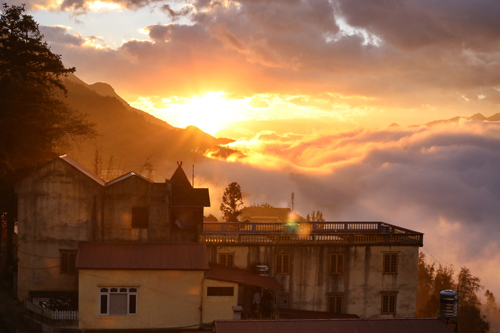




An overnight train combined with hours of carefully teetering over rice fields in the mountains of Sapa left us exhausted. Sam led the way up one last hill in the village of Ta Van to our home for the night. We’d opted to stay in a local house, but didn’t fully understand what that meant until we arrived.
“Hello” was one of the few English words our host spoke. Sam motioned to us to remove our boots and put on slippers as to not get the house dirty. It was dark except for the fire pit in the kitchen. Our host squatted back down over the fire, stirring the vegetables we’d soon eat. The house was large, but empty. The kitchen had only a few low stoops for sitting, a trash can filled with rice, a wooden table for meal prep, and a cabinet with small bowls and chopsticks. A waterspout in the corner was used for washing dishes. There were five red plastic chairs and a folding table that moved from room to room depending on the need. The living room and two beds were not separated by a wall. Behind the TV there was a ladder to the loft where we found two hard mats and a thick blanket: our bedroom. The bathroom was outside and the porch had the most magical view overlooking the village.
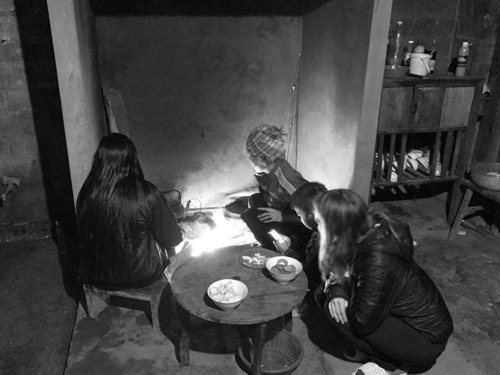
Sam joined our host by the fire. A little boy wandered in watching videos on a cellphone, the only other light in the room. We drank Coca-Colas outside and listened as the oldest of her three sons motioned to us to come and eat. On the folding table was now a spread of chicken with onions, pork with carrots, tofu with chilis, greens, and a mound of white rice. We scooped rice into small bowls and picked at the rest with chopsticks, watching as her sons ate quietly and quickly, eager to get back to their friends in the living room still watching TV. Our host’s husband came home just as we were finishing and insisted on sharing shot after shot of homemade rice wine served out of an Aquafina water bottle. Not long after the power went out, the boys scattered, and everyone grabbed their headlamps. One single candle was lit in the center of the table.


We slept so well that night, waking early to the sounds of roosters spread across Ta Van. Ducks wandered quietly into the kitchen as we sat outside drinking coffee. They were shooed away, then fed dried corn off the cob. Our host went back to cooking the pig breakfast. We felt so well cared for in her home. We were struck by the obvious: This is very different, but how different was it really? Little boys still watched TV, played with cars, and made swords out of bamboo. The family ate dinner together, talked late into the night, and took care of one another. Even in seemingly tougher areas, home is still home.
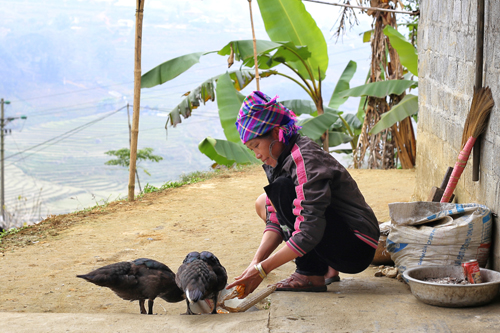
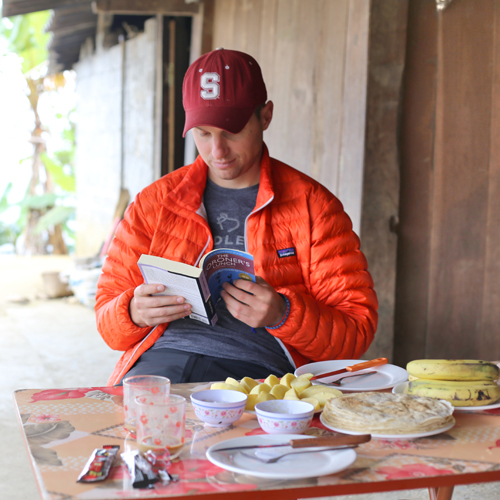
The Sapa Sisters tour that we took while in Sapa is run by local Hmong women. Sam was our wonderful guide!


1.) As recently as 20 years ago, the Hmong women got married at just 14 or 15 years old. A man would decide which woman he wanted to marry, then find 10 friends to help him kidnap her at the market. (We’d hoped kidnap was a more playful term here, but it isn’t.) He’d take her to his house for three days and rape her, then bring the child back to her parent’s home. Her parents, fearing she’d be pregnant, would force her to marry the man, meaning she’d move to his village and spend the rest of her life caring for him and their children. The practice was officially banned when women started committing suicide as a result. However, this still happens some today, but less and less.
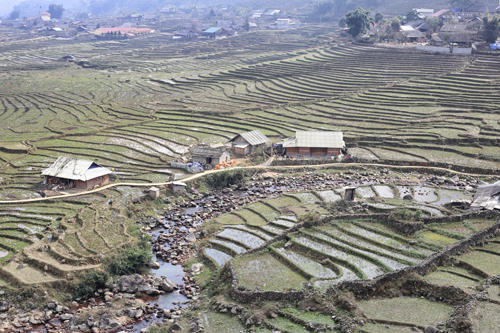
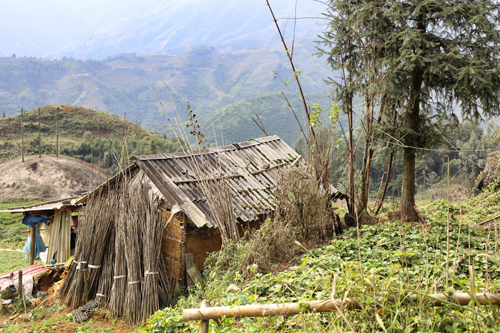
2.) The Hmong continue to put a wonderful energy into making their local clothing when western style clothes have become cheaper and more plentiful. To begin to describe this process, the Hmong women start with hemp, patiently turning that into string during a 3 to 4 month process. They dye it a deep blue from a plant, leaving the skin on their fingers permanently a greenish-blue. They weave the string into fabric with a loom and then very carefully hand-stitch together many delicate patterns and designs into the fabric. The Hmong women are supposed to make one outfit for every member of their family every new year. Making these clothes is so clearly a labor of love, pride, and appreciation for their own culture and tradition.
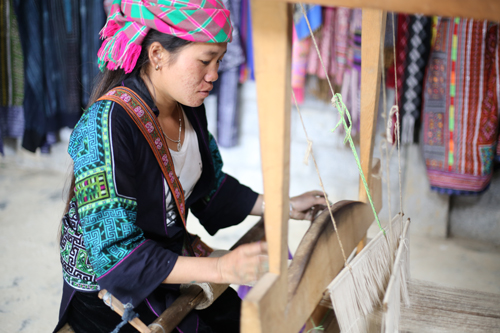

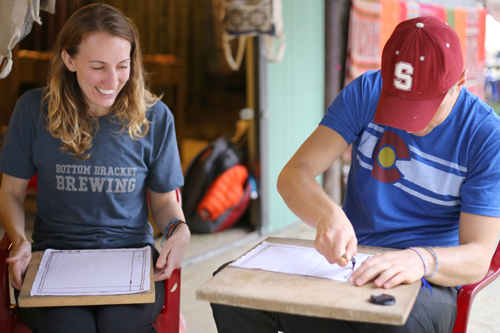
3.) Most of the Hmong people practice a religion described as shaman. When you get sick, it means your spirit has left you. You go to the shaman, a very old woman, and she tells you how to get better. If you have a headache, she prescribed boiling water applied to your forehead for 20 minutes. If this doesn’t work, you go back and the shaman gives you a silver bracelet. If, after a few days, this still doesn’t work, you go to a new shaman.
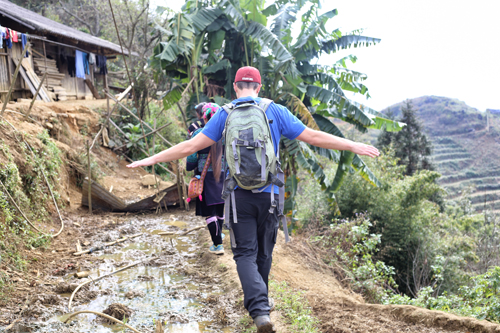

4.) Hmong parents want sons. Though daughters may help them with housework, a son will care for them when they’re old. Often, women will have 3 or 4 girls, hoping the next will be a boy. Sometimes, they’ll buy a boy from another family who has a few or whose parents are addicted to opium. If a woman produces no sons, she stands the risk of her husband divorcing her. Women, on the other hand, would have a very hard time divorcing their husbands, even in situations of abuse or alcoholism.
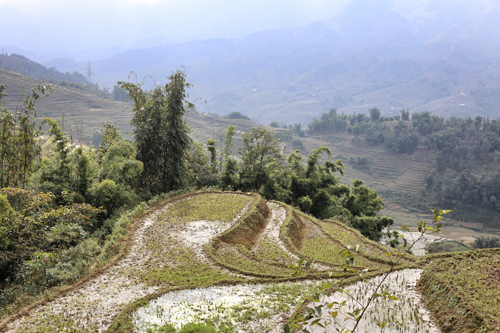

5.) Dozens of little girls ran to us along our hike, selling bracelets for 10,000 dong (equivalent to 50 cents). We had to decline though, in the hopes that their parents would begin sending them to school instead of off to work. It wasn’t until recently that the Vietnamese government helped to build schools, dotting every village in yellow buildings. Sam, our guide, never saw the inside of a classroom as a child.
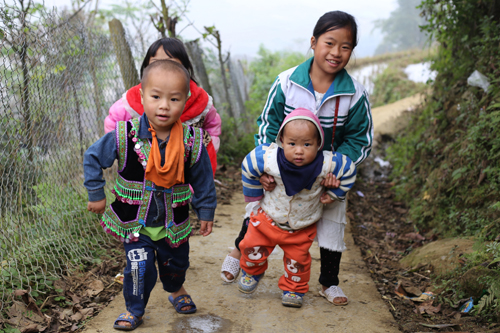
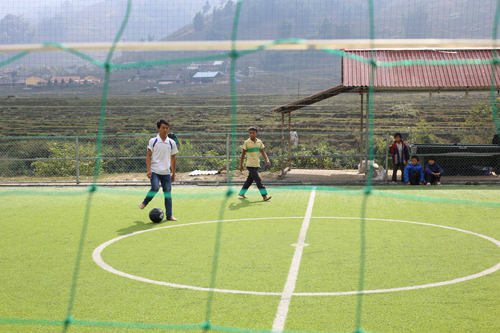
6.) Our Hmong guide seemed so satisfied and fulfilled. It is so easy for us coming from our western ways to pass judgment on what success should look like, or on what everyone should be striving for in their life. Sam, our guide, however, seems to have life more figured out than most of us. She loves being a guide, and she hopes her daughters also get to be guides when they grow up. When asked where she would want to visit or travel, she said to a beach. Not somewhere too far or too foreign, just something a little new. Sam is in the process of building a wonderful and simple new home, which she was so proud to share with us. She sends her daughters to school every day, takes care of the home, spends days at a time with tourists sharing her countryside with them, and just has a zeal for life that was contagious. Thank you Sam for sharing a piece of your world with us.


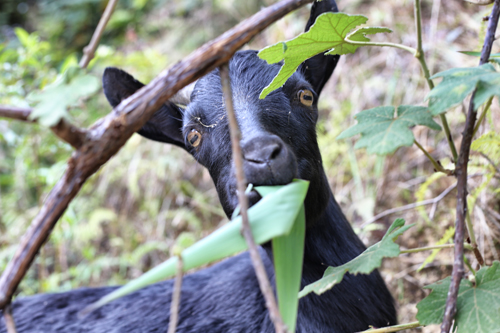











The biggest adrenaline rush today comes in between activities, in between meals, and in between destinations. It is the literally about the journey. The chaos that is the streets of the old quarter in Hanoi give us a new found appreciation for traffic lights and walk signals. Sidewalks are crammed with scooters so that’s not an option, intersections have limited to no rules, and the road is filled with motorbikes, taxis, bicycles, and pedestrians all pretending not to notice the other. The trick: walk slowly and consistently across, while also pretending not to notice anyone else so that they won’t assume you’ll stop. The good news is that after practicing this a couple dozen times, I dare say you do start to get the hang of it. And eventually, we even start to appreciate the craziness that exists atop each of these scooters – babies without helmets, people riding every which way, three or four people to a bike, enormously towering cargo loads, and more.

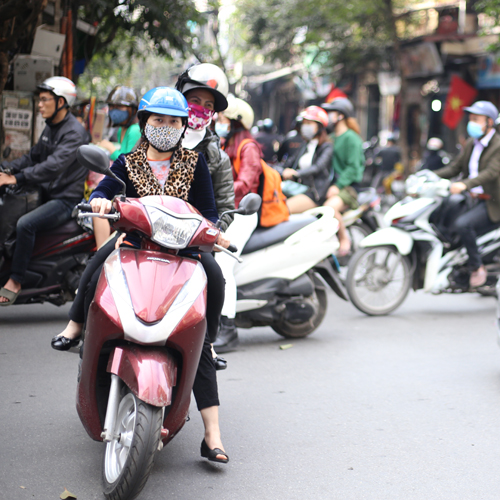

The two spots I wanted to visit while in Saigon were the Cu Chi Tunnels, where the Viet Cong guerrillas hid during combat, and the War Remnants Museum. Both sites left a strong impression. I felt guilty though I played no role, ignorant though the extent of the American atrocities were not taught in school, embarrassed though I did nothing wrong, confused though the photographs told a clear story, and depressed though grateful for the exposure. I recognized I was being shown only one side of the story provided by the victors in their own country; however, even when recognizing a strong bias with prejudiced language, many of the truths of the war were evident.
While visiting the Cu Chi Tunnels, the tour began with an informational video. In the video I learned of the Vietnam “heros” and the American “angry white devils”. I learned of the Vietnamese struggle for independence, freedom and peace, and of their fearless sacrifices and hardships to achieve those goals. And although it was one-sided, I was able to filter truth out of what was being said. Crawling through these tunnels and realizing how much the Viet Cong suffered from the cramped spaces and high levels of malaria also reinforced their strong will to win the American War.
The American atrocities during the war, however, did not become frighteningly clear until my visit to the War Remnants Museum. Here, among other aspects of the war, I learned much about the American’s widespread use of chemicals including the infamous Agent Orange, which included dioxin. The American’s used Agent Orange as a defoliant to expose areas under the thick jungle canopy; however, the Dioxin has had horrendous effects up to the present time in Vietnam. The Vietnamese government claims overs 4,000,000 victims of this devastating toxin although the US still denies scientific evidence linking Agent Orange and the victims of dioxin poisoning. That said, the list of cancers, diseases, and birth defects caused by dioxin is too numerous to list. In addition, along with the use of Agent Orange, the Americans also used non-targeted bombs such as cluster bombs whose damage spread to both military personnel and civilians.
The War Remnants Museum powerfully told this story through photographs. Photos of children born with birth defects. Photos of people with limbs missing and with faces disfigured. Photos of women and children dead and lying on top of each other.
In addition, I visited the museum with Serhat from Australia who I met at the Cu Chi Tunnels, and with Hoa, my new Vietnamese friend studying in Saigon. An American together with a Vietnamese viewing the photographs throughout the museum heightened the impact of the experience. Hoa was so welcoming and so kind to me, and at the same time, we were both seeing images of how people from my country hurt those from hers. Knowing there was little I could do at the time, I focused on learning as much as I could from the photos and stories presented by the museum. This day forced me to see the American War from the victor’s perspective, and I felt obliged to do so considering it was the least I could do given what I learned.
Getting into Saigon was a shock after my time in central Vietnam. The paddy fields were replaced with buildings and the rivers with roads. However, the bustle of the city was made more manageable as I toured around with my new friend, Hoa on her motorbike. She showed me the post office with its elaborate French architecture, we toured the South Vietnam wartime headquarters, and she helped me haggle my way through the night market of District 1. Saigon is a young vibrant city with parks full of activity and a busy nightlife. Unfortunately, part of the youngness of the city is the fault of the American War in that much of a generation died within those years.
Learning Hoa’s university student perspective on Saigon was a perfect way to end my Vietnam tour. Similar to the other Vietnamese I met, she was both proud of the culture and excited to share it. The perfect example of this was with traditional Vietnamese food. Hoa brought me a special dish along with some ca phe (Vietnamese coffee), which I had ordered at any and every opportunity. In short, the big city of Saigon felt smaller and friendlier thanks to Hoa.

Later that evening, Hoa and I went to listen to Anh Tuyet sing Trinh Cong Son in a concert to remember this famous composer’s death 10 years ago. The concert was relaxing and I enjoyed listening to Hoa and the others around me sing along with some of the more famous tunes. As a change of pace from the last week, the culture I experienced in Saigon was less of the old traditional Vietnamese culture, and more of the current and live arts culture. Interestingly, at the end of the performance, everyone sang a song recognizing the unification and cooperation of the Vietnamese people. When trying to compare this experience to something in U.S., my first thought was that of my school’s fight song that plays after the performances leading up to our big rivalry football game, the only difference being that our fight song ironically has less of a marching feel.

Again, I thank Hoa and all of the friendly Vietnamese I have met that made me feel so welcome. As I mentioned before, especially in situations such as these, I feel so fortunate to have had the experiences and to have met the people that I did.
While in Hoi An and in central Vietnam, I wanted to see what the goings-on are of the countryside. I found a bicycle tour that would take me around the islands adjacent to Hoi An and explain some of the local craft and handy skills. While on the tour, I saw wood steam-bending, shell cutting, wood carving, mat weaving, water freezing, brick manufacturing, peanut and rice picking, and basket boat making.






My Son is a Vietnamese name for a cluster of temple ruins that bears no relation to its English meaning. The phrase “the boys”, however, is intended to have exactly its American connotation.
In an attempt to avoid the tourists at My Son, I left in the mid-afternoon from Hoi An and pay a motorbike driver less than it would’ve cost for gasoline in my Prius to take me to My Son. On our way, we fly through narrow roads surrounded by rice fields and farmland, and during the hour drive, I learn the smells of Vietnam. I smell exhaust on the road, trash burning next to it, incense sticks, and occasionally fresh air. When we arrive to My Son, it was just as I had hoped and there are less than 10 tourists wandering through a space that could accommodate many more and still feel empty.

With my camera in one hand and the Kindle version of Lonely Planet in the other, I navigate my way through the ruins trying to come with the perfect photo while still learning which building was intended for which purpose. After covering about half of the ruins, I find a group sitting in a circle and listening to music. It is unclear how everything progressed, but I soon find myself in their circle, we compare music tastes, and we share our snacks. I learn that they are all currently attending a university in a near-by town, De Nang, and are just visiting the ruins as an afternoon break from school. A couple snacks later, they ask my evening plans, I tell them none, and we decide that they should come back with me to Hoi An. Throughout it all, we communicate either very slowly in English or by writing notes to each other. They could understand almost anything I wrote despite having some trouble understanding me verbally.

Between the five of them and me, we pile on four motorbikes and work our way back. I was particularly happy not to be driving at this point as the sky was turning black with only the almost full moon, the occasional street light, and the bikes less-than-powerful headlight to drive by. We get back to town, and the first thing we do is eat. I am not entirely certain what I am eating because we eat next to the street on what seemed light children’s red play furniture. The food was good and cheap. Dinner cost less than $0.50 per person. With full stomachs, we walked the streets of Hoi An, before coming across another inexpensive and local restaurant. We ordered beers, some fried food, and I took out my deck of cards. I let them teach me a new game because with our communication barriers, 5 teaching 1 is clearly superior to 1 trying to teach 5. During the rest of the night, I really enjoy the game and their company.

The Vietnamese, both tonight with the boys and the other day with Quynh Chi, have been so welcoming and warm to me. In twenty years, I think it will be these faces that I will remember the most about my time in Vietnam.